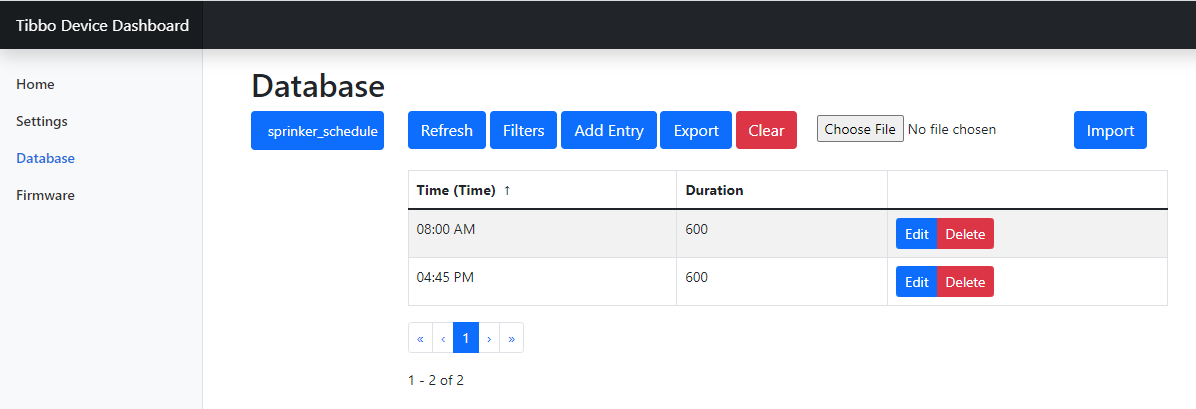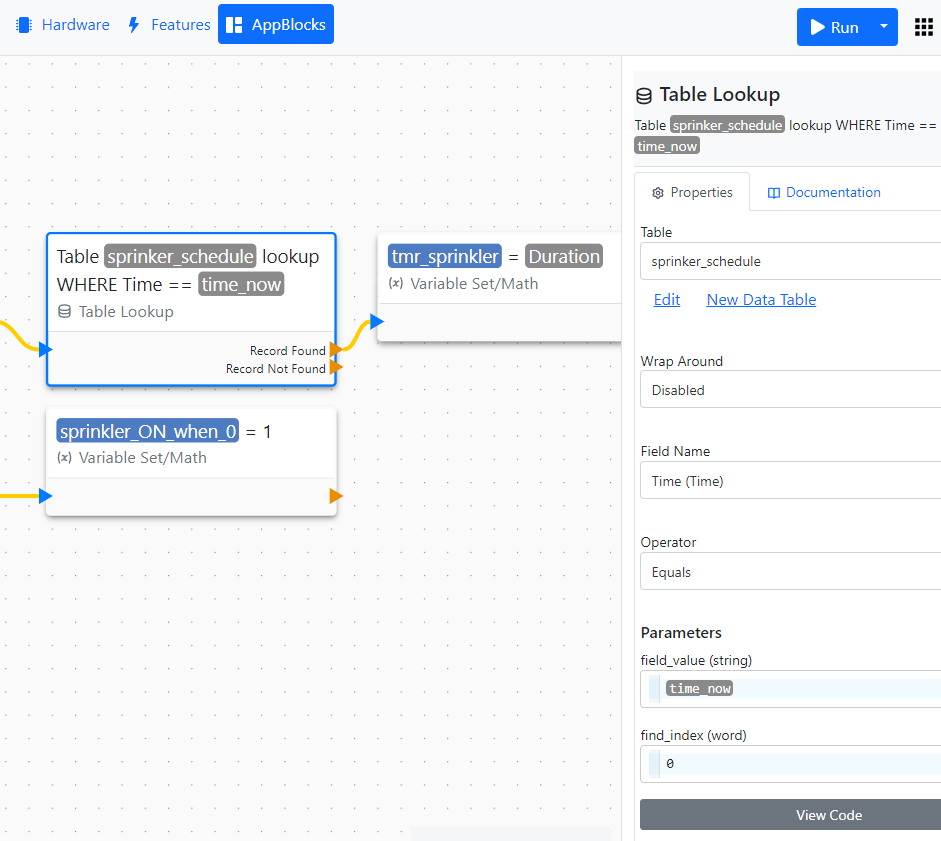Hardcoding the watering start times and duration -- as we did in the first version of the application -- is a "quick and dirty" way of creating a Sprinkler Controller for personal use. If you are designing for your customers, a bit more "finesse" will be required to satisfy the general public. Obviously, the proper way is to have an editable schedule table. Each entry in this table would consist of the watering start time and the watering duration.
This is where the data tables come in. These are defined on the Data Tables page of the Features tab. Here is the structure of this project's sprinkler_schedule table:

As soon as a single data table is defined in your application, the Web Dashboard is enabled automatically. This differs from the settings, which must be exposed to the web or LUIS interface individually.
To manually define data for your application, you must enable an interface. This interface can be LUIS or a web dashboard (cloud or local). For this tutorial, we will use the local web dashboard.

The corresponding AppBlocks block is called Table Lookup. It is the centerpiece of this application. Here is how the application works:
A Scheduler triggers the execution every minute, on the minute. The application then fetches the current date and time. The Table Lookup block compares the present time with the Time field of all table records. If there is a match, the sprinkler relay is activated, and the tmr_sprinkler timer is loaded with the value from the Duration field of the fetched data table record (the record that matched the current time).

The Get Current DateTime block fetches the current date and time. The Table Lookup block compares this with the Time field of the data table records. This works because the system understands that the Date component must be disregarded in the DateTime-to-Time comparison.
Notice the two cases of parameter passing in this application. The first instance is passing the current date and time from the Get Current DateTime block to the Table Lookup block. The latter receives the date and time in the time_now parameter. The second instance is passing the watering duration from the Table Lookup block to the Variable Set/Math block. The latter receives the watering duration (from the fetched field) as the Duration parameter.
This, and many other projects, takes advantage of the LUIS interface. The application makes two settings -- Ethernet DHCP and Ethernet IP -- accessible from the LUIS smartphone app. Please note that LUIS relies on BLE (Bluetooth Low Energy), which cannot be tested on Cloud ADK kits.